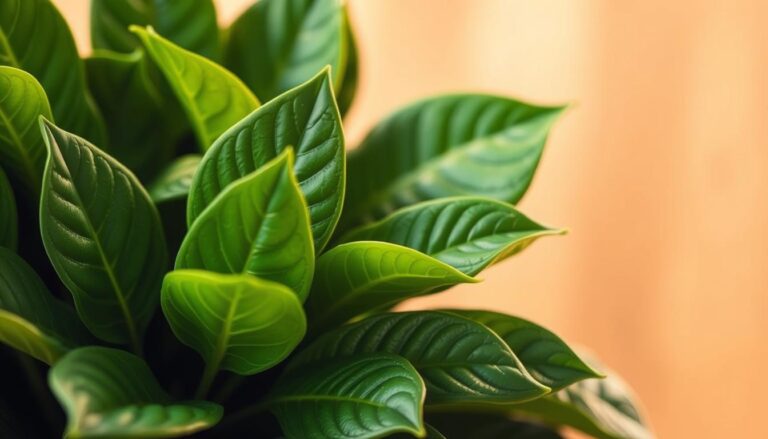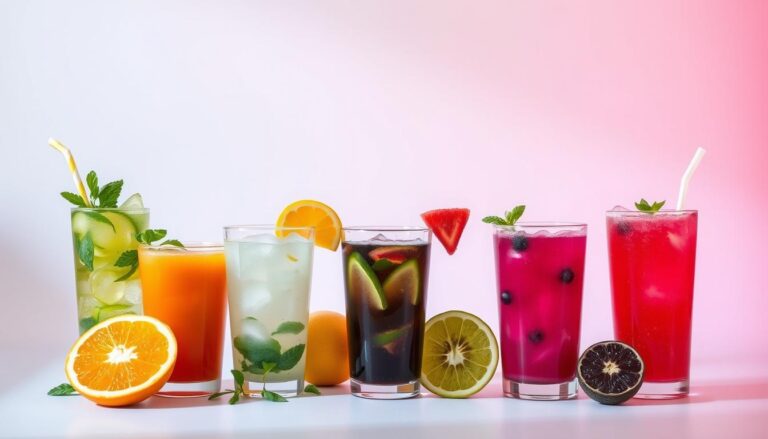Ever wondered why your kitchen holds the secret to radiant skin and healthy hair? Many beauty products today contain harsh chemicals, but simple ingredients from home can transform your skin care routine.
With 40% of US consumers prioritizing natural beauty solutions, now is the perfect time to explore DIY beauty alternatives.
Trends show 62% of people prefer hyper-personalized solutions, and kitchen staples like honey, avocado, and coconut oil offer dual benefits. These ingredients nourish inside and out while cutting costs and reducing waste. Brands like Biossance already use sustainable alternatives, proving eco-friendly choices work.
From homemade masks to hair treatments, beauty recipes let you customize care while supporting sustainability. Ready to unlock the power of your pantry?
Key Takeaways
- Consumers increasingly prefer natural beauty solutions with clean ingredients.
- Kitchen staples provide affordable, effective skin care alternatives.
- Hyper-personalized DIY beauty routines are gaining popularity.
- Sustainable brands prove eco-friendly beauty products deliver results.
- Homemade treatments reduce waste and save money.
Why DIY Natural Beauty Recipes Are Gaining Popularity
Clean beauty trends reveal a growing demand for chemical-free alternatives. NielsenIQ reports the sector grows four times faster than conventional beauty products, with 40% of consumers prioritizing natural ingredients. Brands like BASF and Garnier lead the charge with biodegradable formulas and zero-waste goals.

The Rise of Clean Beauty Trends
The clean beauty market expanded 8.1% year-over-year, outpacing conventional growth at just 2%. Companies like Evonik Industries reduce petrochemical use with plant-based surfactants, while Solvay’s Naternal brand relies on biodegradable polymers.
Key drivers include:
- Health concerns over synthetic chemicals 15-50 per product.
- Eco-conscious choices, like Garnier’s 2025 plastic-free pledge.
- Cost savings clean beauty costs $66 more annually but lasts longer.
Benefits of Using Kitchen Ingredients for Skin and Hair
Pantry staples like coconut oil and oats offer affordable, effective skin care. They’re free from preservatives and packed with nutrients. For example:
| Ingredient | Benefit | Conventional Alternative |
|---|---|---|
| Coconut Oil | Moisturizes hair & skin | Silicone-based serums |
| Oats | Soothes irritation | Chemical exfoliants |
| Avocado | Rich in vitamins E & C | Synthetic fillers |
Clariant AG’s biotech acquisitions highlight the shift toward bioactive ingredients. DIY solutions align with this trend, offering personalized, sustainable care without compromise.
Key Natural Ingredients for DIY Beauty Treatments
Pantry staples can transform your beauty routine with science-backed benefits. Brands like BASF and Ashland now use rice extracts and hyaluronate to replace synthetic ingredients. These alternatives match lab-made performance while being gentler on skin and hair.

Coconut Oil: A Versatile Beauty Staple
Coconut oil contains 50% lauric acid, a fatty acid that penetrates hair shafts better than silicones. Studies show it reduces protein loss by 34% compared to mineral oil. BASF’s D’lite service confirms its stability in rice-based formulations.
Avocado Nutrient Rich for Skin and Hair
Avocado’s vitamins E and C repair UV damage and boost collagen. Its monounsaturated fats smooth hair cuticles, outperforming synthetic serums in hydration tests. Turkey tail mushroom extract now replaces BHT in 22% of products for similar benefits.
Oats and Baking Soda Gentle Exfoliants
Colloidal oats soothe eczema, while baking soda balances pH. Dow Inc’s sugar-derived surfactants enhance these ingredients for biodegradable scrubs. Hemidesmus indicus also replaces hydroquinone in brightening blends.
Essential Oils and Their Healing Properties
Lavender and tea tree oil offer antimicrobial properties. Syensqo’s $2.1M investment in natural solvents like eucalyptus ensures safer extraction methods. Centella asiatica replaces retinoids in sensitive skin formulas.
| Ingredient | Key Benefit | Innovative Use |
|---|---|---|
| Coconut Oil | Deep hydration | Rice-based emulsifiers |
| Avocado | UV repair | BHT replacement |
| Baking Soda | pH balancing | Biodegradable surfactants |
| Tea Tree Oil | Acne control | Solvent-free extraction |
Simple and Effective DIY Beauty Recipes
Transform your daily routine with these easy-to-make DIY beauty treatments. Each recipe uses pantry staples backed by science, like Novi’s 300% growth in rice ferment filtrate for hydration. NaDES technology ensures 97% phenolic compound retention, boosting efficacy.

Calming Facial Mist with Chamomile and Lavender
This mist soothes irritated skin while balancing pH. Lactic acid in the blend preserves microbiome health, a feature in 58% of new formulations.
- Mix ½ cup distilled water 2 tbsp chamomile tea, and 5 drops lavender oil.
- Store in an 8-ounce amber glass bottle refrigerate for 5-day freshness.
- Spritz on face twice daily avoid citrus oils above 2% concentration.
Soothing Oat and Almond Face Scrub
Colloidal oats and almond meal gently exfoliate. Hordeum vulgare leaf juice adds vitamins B and E per 100ml.
- Combine ¼ cup ground oats, 2 tbsp finely crushed almonds, and 1 tbsp honey.
- Massage onto damp skin rinse after 2 minutes.
- Use weekly for radiant results.
Matcha Spirulina Mask for Detoxification
Trametes versicolor extract 0.5% concentration enhances antioxidant effects. Cosmo International’s air based extraction method ensures purity.
| Ingredient | Benefit | Science Insight |
|---|---|---|
| Matcha | Reduces redness | EGCG content fights free radicals |
| Spirulina | Detoxifies | 97% nutrient retention via NaDES |
| Rice Water | Brightens | Saccharomyces ferment boosts hydration |
Tip: Refrigerate masks with water-based ingredients use within 3 days.
Natural Hair Care Treatments You Can Make at Home
Revitalize your locks with pantry staples backed by clinical research. Rice water increases elasticity by 27%, while moringa seed extract hydrates 41% better than silicones. These ingredients rival salon beauty products at a fraction of the cost.
Avocado Rice Water Hair Mask for Strength
Fermented rice water contains biosurfactants that repair damage. Optimal fermentation takes 24–48 hours. Pair it with avocado for deep conditioning:
- Blend ½ avocado with ¼ cup fermented rice water.
- Add 1 tsp moringa oil 75% oleic acid vs. argan’s 45.
- Apply for 20 minutes rinse with cool water.
Tip: Hydrolyzed silk protein MW ≤500 Da penetrates strands faster, thanks to Croda’s Solus Biotech peptides.
Dry Shampoo with Baking Soda and Cornstarch
This blend absorbs excess oil without sulfates. Adjust ratios for your hair color:
| Hair Color | Cornstarch | Baking Soda |
|---|---|---|
| Blonde | 3 tbsp | 1 tbsp |
| Brunette | 2 tbsp | 1 tbsp + 1 tsp cocoa |
Avoid salt scrubs more than once weekly Evonik’s Tegosoft OER is a gentler alternative.
Cost savings: $3.17 per batch vs. $28 Olaplex treatments.
Safety Tips for Using Homemade Beauty Products
Safety should always come first when crafting homemade beauty solutions. While DIY treatments offer care customization improper use can lead to irritation or spoilage. Follow these guidelines to ensure effective, risk-free results.
Patch Testing to Avoid Allergic Reactions
28% of DIY users report adverse reactions without patch testing. Apply a small amount of the treatment behind the ear or inner elbow for 24–48 hours. Watch for redness itching, or swelling.
Key steps:
- Use NSF-certified glass containers for pH-sensitive formulas.
- Lactobacillus ferment lysate works best at pH 5.5–6.2 for microbiome safety.
- Avoid metal containers with acidic ingredients like lemon juice.
Proper Storage to Prevent Spoilage
Natural products lack synthetic preservatives, increasing spoilage risks. Sodium phytate extends shelf life by 38% compared to grapefruit seed extract.
Storage tips:
- Refrigerate water-based masks use within 3 days.
- Rosemary extract outperforms synthetic agents in mold prevention.
- Label jars with creation dates most blends last 1–2 weeks.
Novi’s research shows 22% growth in microbiome-friendly actives, emphasizing the need for COSMOS certified ingredients. Prioritize safety to enjoy DIY beauty’s full benefits.
Sustainable Beauty Reducing Waste with DIY Solutions
Every year, 120 billion beauty packages end up in landfills DIY solutions offer a way out. With 17.6% of consumers prioritizing eco-friendly care, repurposing kitchen scraps and ditching single-use plastics can slash your carbon footprint. Brands like Caudalie and BASF prove sustainable practices work, from upcycled grape water to COSMOS certified rice extracts.
Upcycling Kitchen Ingredients for Beauty
Turn food waste into powerful ingredients. Caudalie’s grape marc upcycling cuts production waste by 34%, while sugarcane squalane uses 58% less land than coconut alternatives. Try these swaps:
- Avocado pits: Blend into scrubs rich in antioxidants.
- Coffee grounds: Mix with coconut oil for cellulite reduction.
- Citrus peels: Steep in vinegar for clarifying hair rinses.
BASF’s rice-derived emulsifiers show how food byproducts rival lab-made beauty products in efficacy.
Minimizing Plastic Waste with Reusable Containers
Swap single use bottles for glass or stainless steel. Sephora’s Clean + Planet Aware certification requires:
- 100% recyclable or refillable packaging.
- Carbon-neutral shipping.
- Biodegradable formulas NaDES degrades 4x faster than PEG-40.
Solvay’s bio-based polymers decompose in 180 days versus 450 years for conventional plastics. For homemade care, store masks in amber jars to preserve ingredients like rosemary extract, which prevents mold naturally.
| Material | Decomposition Time | Brand Example |
|---|---|---|
| Sugarcane plastic | 1–5 years | Herbivore Botanicals |
| Glass | Infinite reuse | Caudalie |
| Bamboo | 6 months | Lush |
Pro tip: Calculate your savings DIY cuts 3.2 lbs of waste monthly per person.
Conclusion
Switching to DIY beauty blends supports both personal wellness and environmental goals. With the natural cosmetics market projected to hit $1.095B by 2030, brands like L’Oréal commit to carbon-neutral care by 2030.
Featured recipes use ratios like 0.5% Trametes versicolor extract for efficacy. Formula Botanica’s certification program helps creators master clean formulations.
Emerging trends include sh-Polypeptide-45 for hair repair. Always store home made masks in amber jars Novi’s 2025 CPG Trends Report details best practices.
Share your DIY experiences below. Let’s redefine beauty with sustainable, skin-friendly ingredients.





